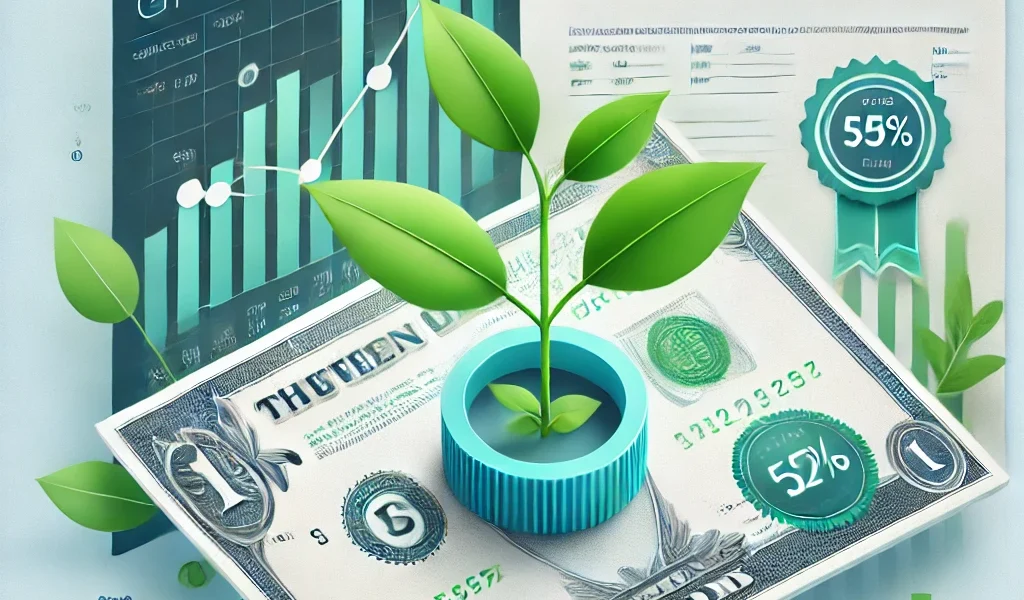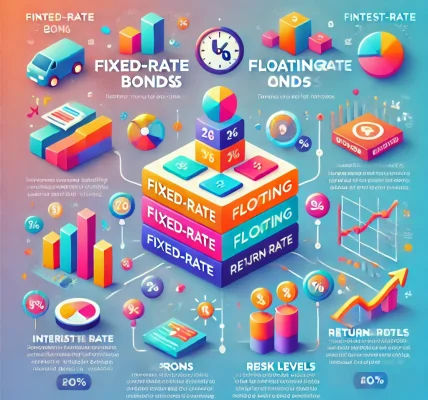In today’s world, where environmental concerns are at the forefront, investors are increasingly looking for opportunities that not only offer financial returns but also contribute to a sustainable future. Green bonds have emerged as a powerful financial instrument that bridges the gap between profit and environmental responsibility. This article explores the concept of green bonds, their benefits, risks, and why they are becoming a popular choice for investors worldwide.
What Are Green Bonds?
Green bonds are fixed-income securities issued to finance projects with positive environmental impacts. These projects typically include renewable energy, energy efficiency, sustainable agriculture, clean transportation, and other initiatives aimed at reducing greenhouse gas emissions and combating climate change.
The concept of green bonds originated in 2007 when the European Investment Bank (EIB) issued the first Climate Awareness Bond. Since then, the market for green bonds has grown exponentially, attracting both institutional and individual investors who seek to align their financial goals with sustainable development.
How Do Green Bonds Work?
Green bonds function similarly to traditional bonds. When an investor purchases a green bond, they are essentially lending money to the issuer, who agrees to pay back the principal amount along with interest over a specified period. The key distinction is that the proceeds from green bonds must be used exclusively for environmentally beneficial projects.
Issuers of green bonds can include governments, municipalities, financial institutions, and corporations. To ensure transparency and accountability, many green bonds adhere to guidelines set by organizations such as the International Capital Market Association (ICMA) through its Green Bond Principles (GBP).
Types of Green Bonds
Green bonds come in various forms, each tailored to specific funding needs and structures:
- Use of Proceeds Bonds: The most common type, where funds raised are earmarked for green projects.
- Green Revenue Bonds: Backed by the revenue generated from the green projects themselves.
- Green Project Bonds: Issued for specific green projects and secured by their assets.
- Securitized Green Bonds: Backed by green assets, such as mortgages on energy-efficient buildings.
Benefits of Investing in Green Bonds
Investing in green bonds offers several advantages that appeal to both ethical and profit-oriented investors:
1. Positive Environmental Impact
Green bonds provide crucial funding for projects that reduce environmental degradation, promote clean energy, and mitigate climate change.
2. Financial Returns
Like conventional bonds, green bonds offer predictable income through regular interest payments and the return of principal at maturity. In some cases, green bonds may also offer tax incentives, enhancing overall returns.
3. Portfolio Diversification
Green bonds offer investors a way to diversify their portfolios while supporting environmental sustainability. This diversification can reduce overall investment risk.
4. Enhanced Corporate Reputation
For corporate issuers, green bonds demonstrate a commitment to sustainability and social responsibility, which can improve brand reputation and attract socially conscious investors.
5. Market Growth and Liquidity
The green bond market is expanding rapidly, increasing the liquidity and availability of these instruments, which makes it easier for investors to enter and exit positions.
Risks Associated with Green Bonds
While green bonds present compelling benefits, they also come with certain risks that investors should consider:
1. Greenwashing Concerns
Greenwashing refers to the risk that bond proceeds may not be used for genuinely sustainable projects. To mitigate this, investors should seek bonds certified by reputable third parties and adhere to recognized frameworks like the Green Bond Principles.
2. Credit Risk
As with any bond investment, there is a risk that the issuer may default on interest payments or fail to repay the principal. Assessing the creditworthiness of the issuer is crucial.
3. Market Risk
Changes in interest rates and market conditions can affect the value of green bonds. Rising interest rates generally reduce bond prices, which can impact investment returns if sold before maturity.
4. Regulatory Uncertainty
Environmental regulations and policies can change over time, potentially affecting the viability of green projects and the performance of green bonds.
How to Invest in Green Bonds
Investors have several avenues to access the green bond market:
1. Direct Purchase
Investors can buy green bonds directly from issuers during the initial offering or through secondary markets.
2. Green Bond Funds
Mutual funds and exchange-traded funds (ETFs) focused on green bonds provide diversified exposure and professional management.
3. Government Programs
Many governments issue green bonds to fund national environmental initiatives. These bonds are often considered low-risk and are accessible to a wide range of investors.
4. Financial Advisors
Consulting with financial advisors who specialize in sustainable investing can help investors identify suitable green bond opportunities and align investments with their values.
Evaluating Green Bonds: Key Considerations
When assessing green bonds, investors should evaluate the following factors:
- Issuer Credibility: Review the issuer’s track record and financial stability.
- Use of Proceeds: Ensure the bond’s proceeds are allocated to legitimate green projects.
- Third-Party Verification: Look for bonds certified by recognized organizations to avoid greenwashing.
- Yield and Maturity: Compare interest rates and maturity dates to align with investment goals.
- Reporting Transparency: Prioritize bonds with clear reporting on how proceeds are used and their environmental impact.
Future of Green Bonds
The future of green bonds looks promising as global efforts to combat climate change intensify. Regulatory frameworks are strengthening, and investor demand for sustainable investments is on the rise. Innovations such as sustainability-linked bonds and transition bonds are also expanding the market, offering new opportunities for investors.
Governments and corporations are likely to increase green bond issuance to meet climate targets, driving further growth and mainstream adoption. For investors, this trend presents a unique chance to contribute to a sustainable future while achieving financial returns.
Conclusion
Green bonds represent a compelling investment option that marries financial returns with environmental stewardship. As climate change and sustainability concerns continue to shape global economies, green bonds provide a practical and profitable way for investors to make a positive impact.
By carefully evaluating green bond opportunities and staying informed about market developments, investors can position themselves to benefit from this growing sector while contributing to a healthier, more sustainable planet.
Disclaimer: This article is for informational purposes only and does not constitute financial or legal advice. Investors should conduct thorough research and consult with professional advisors before making investment decisions.




